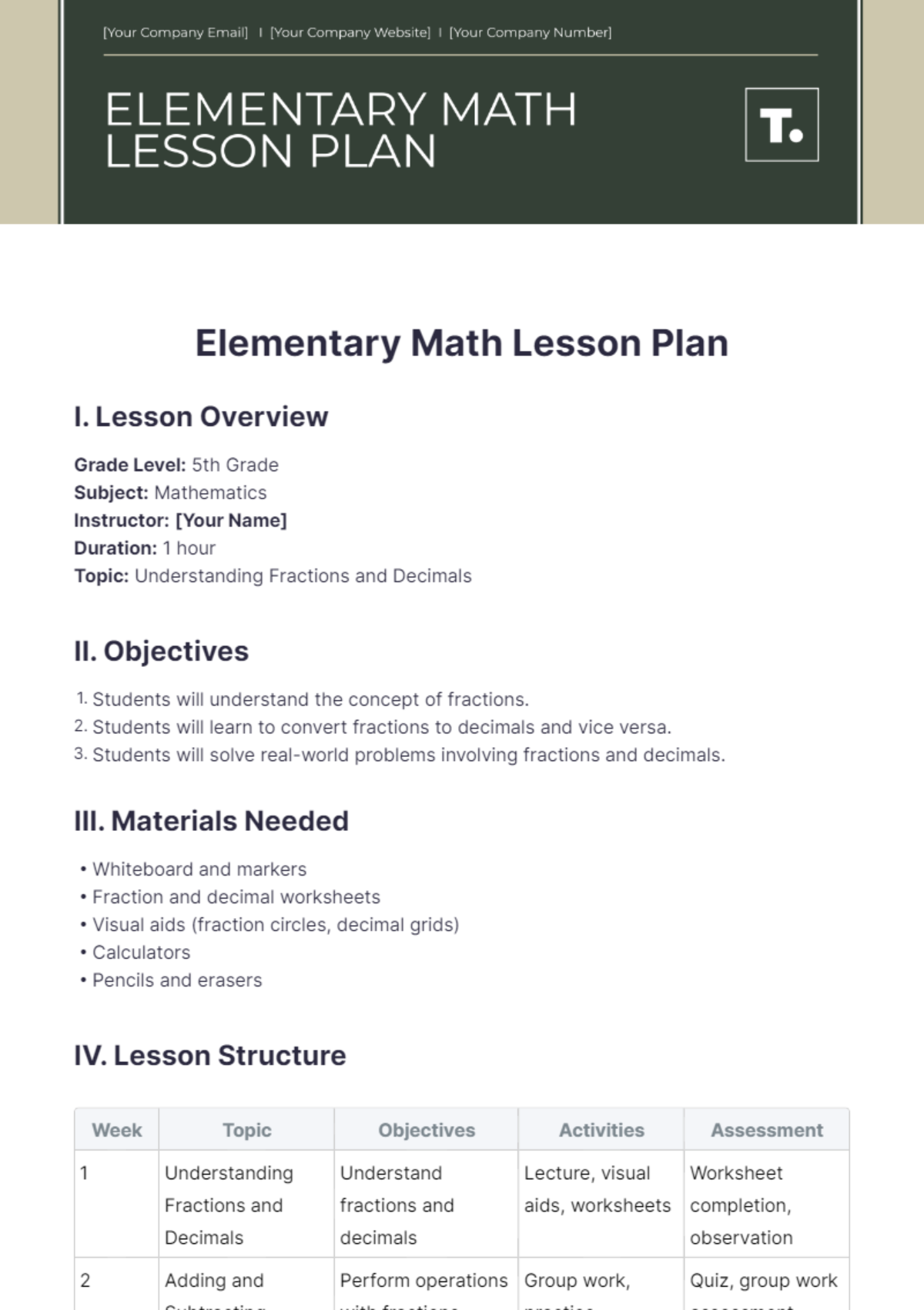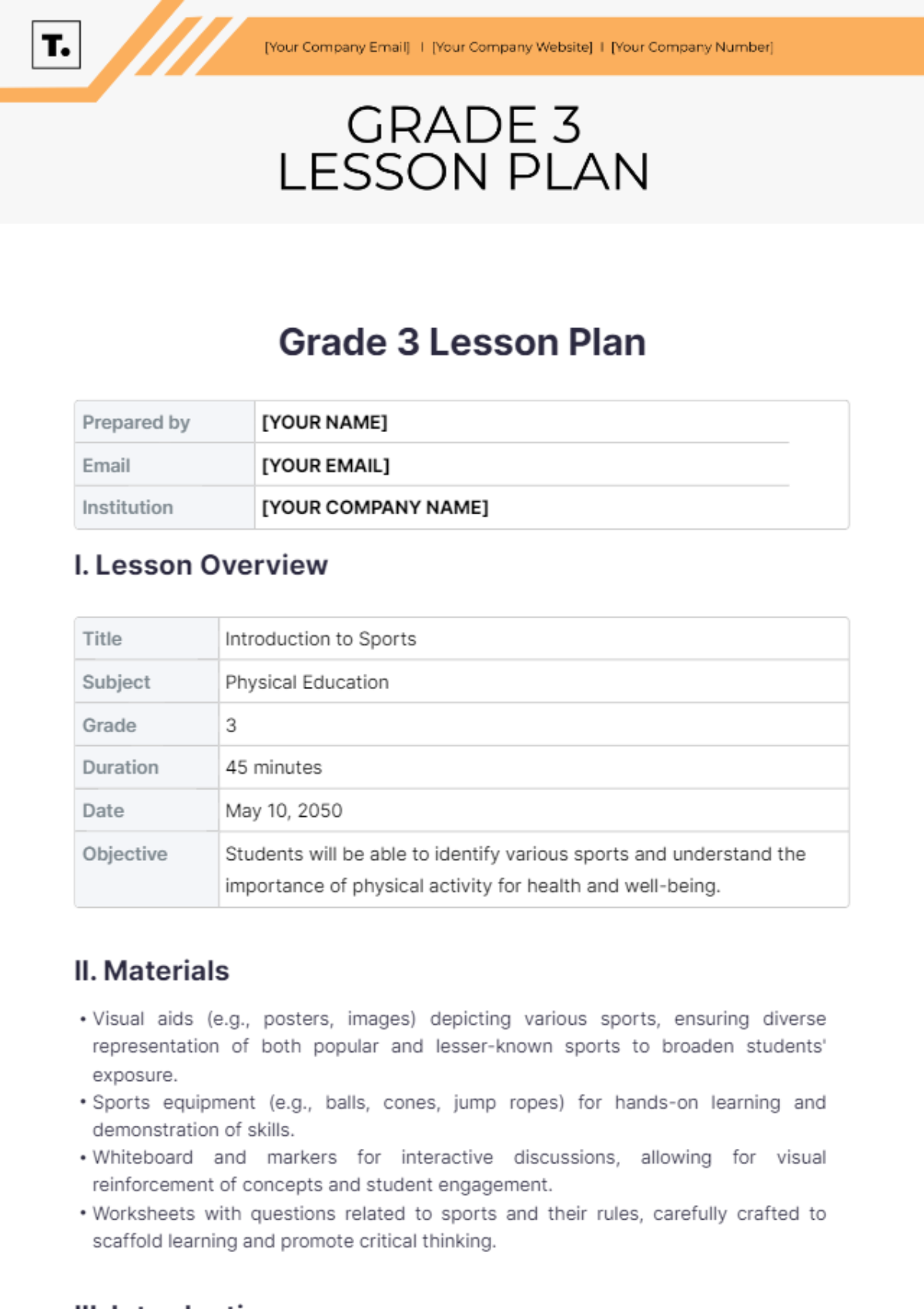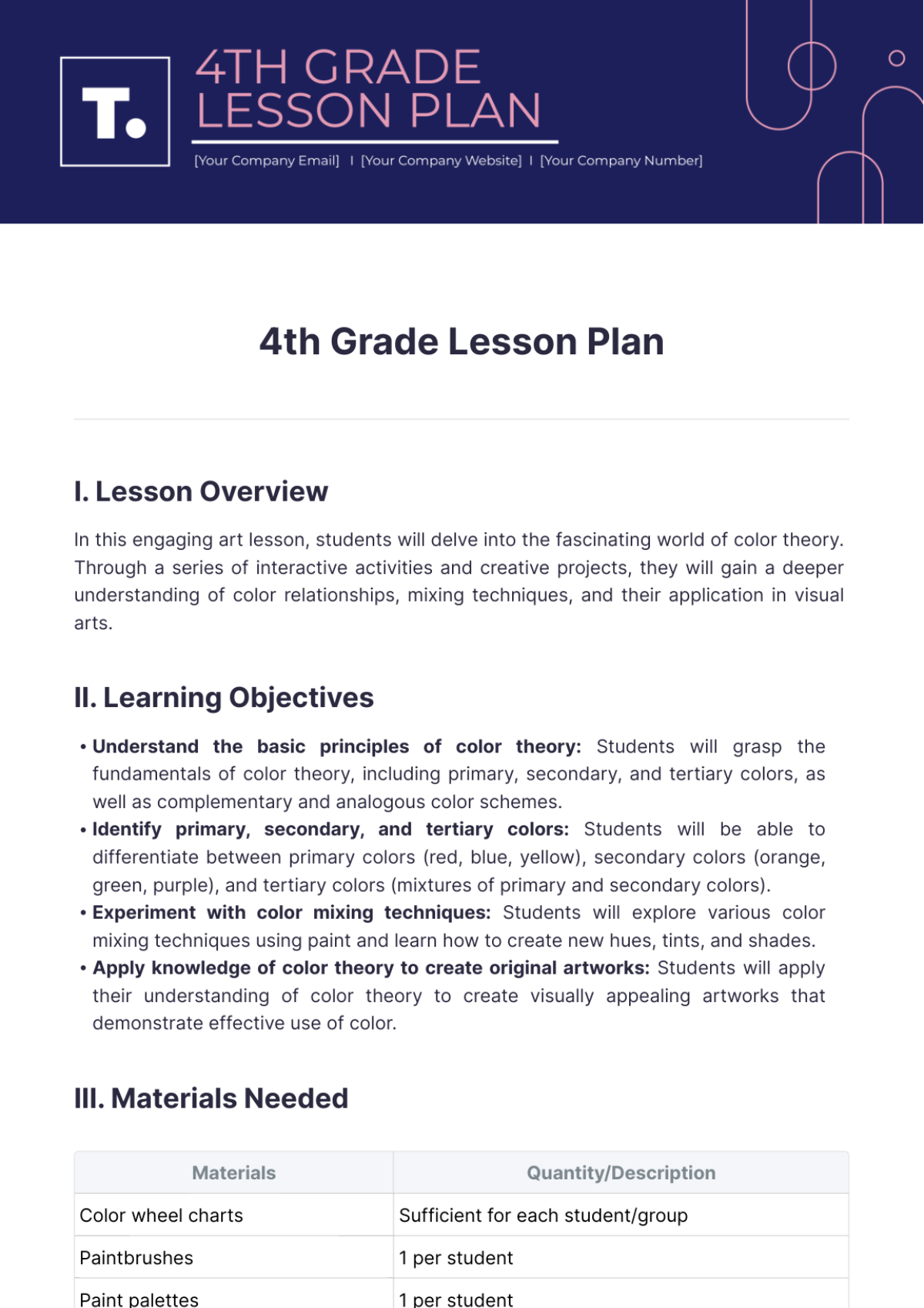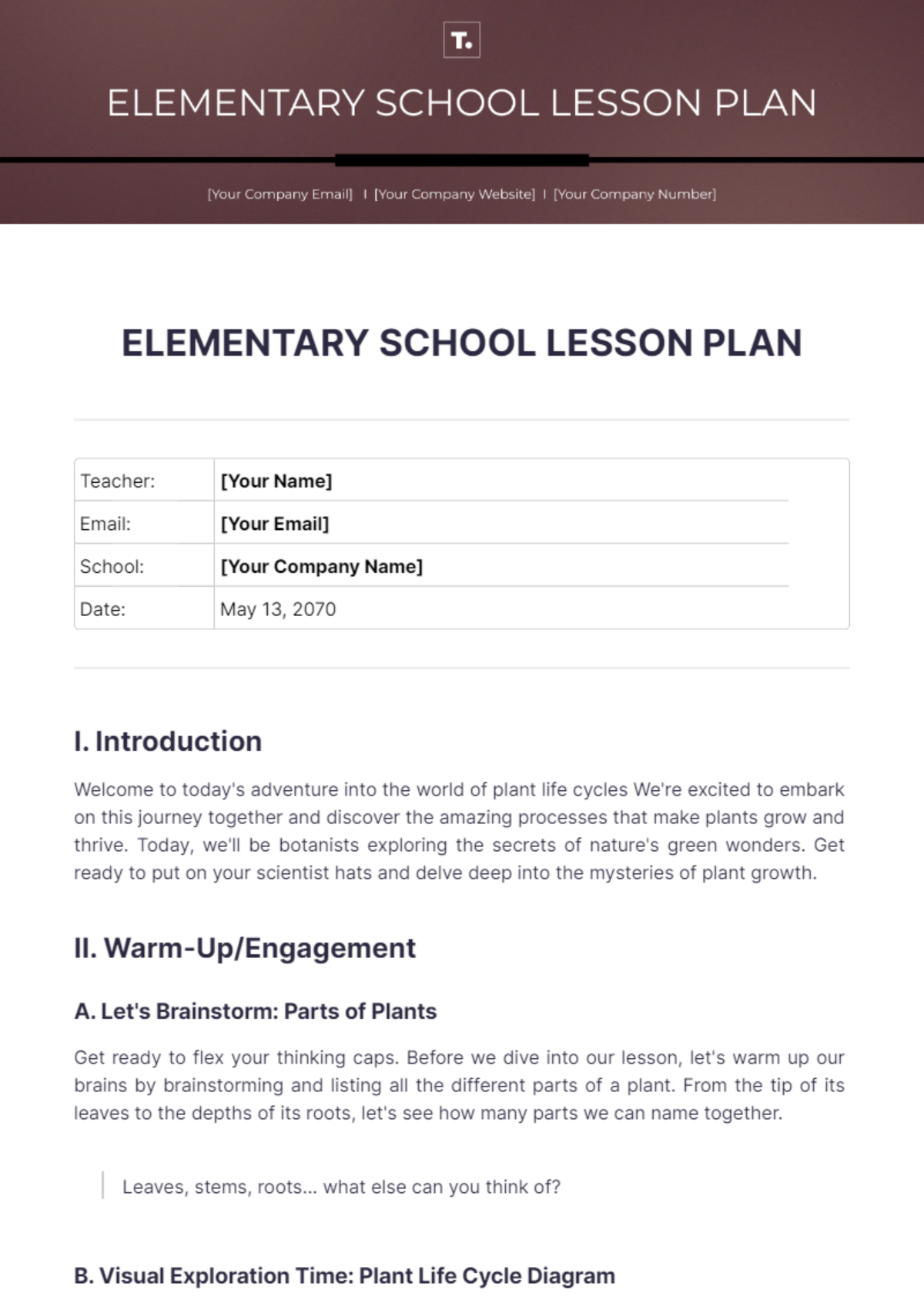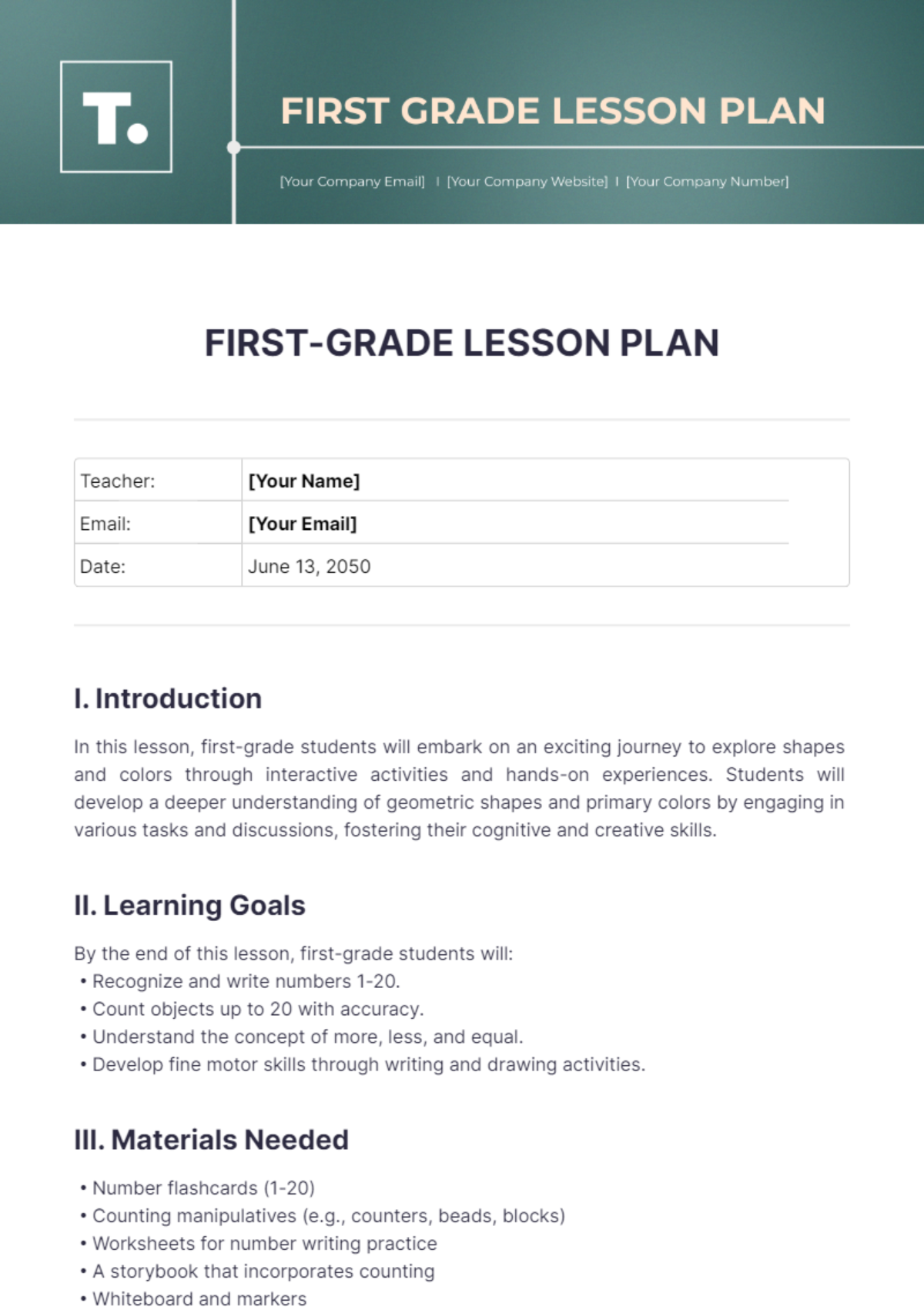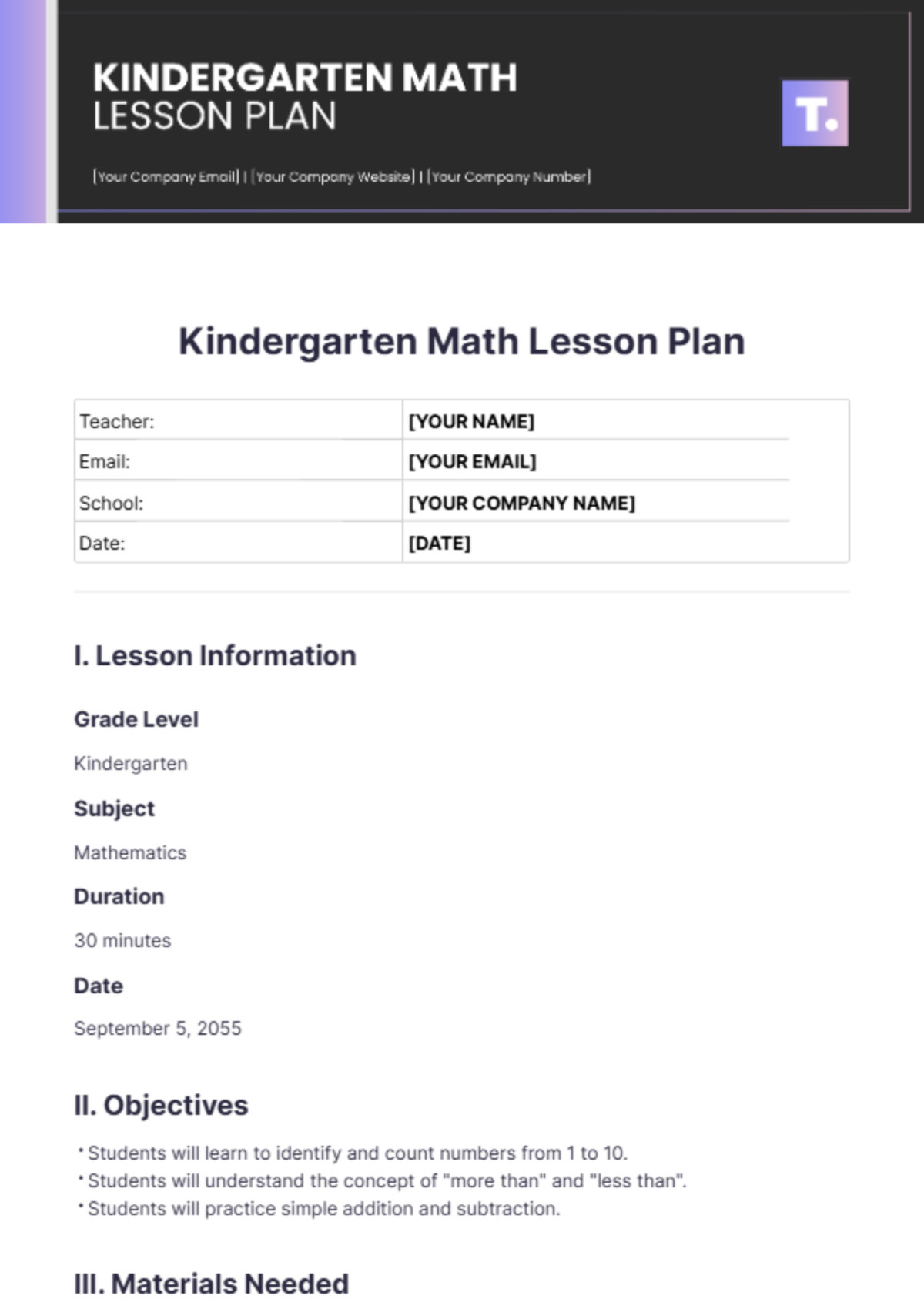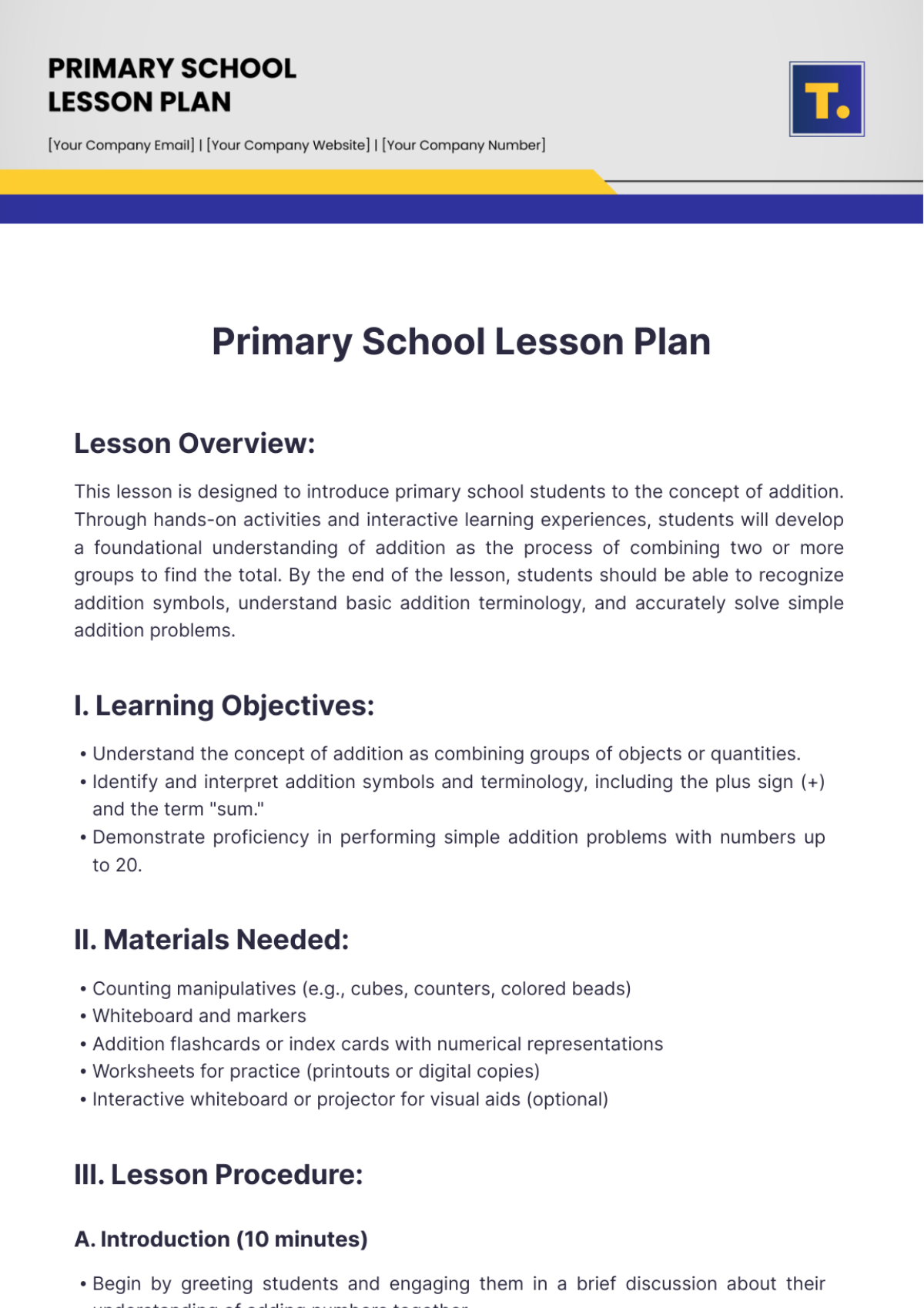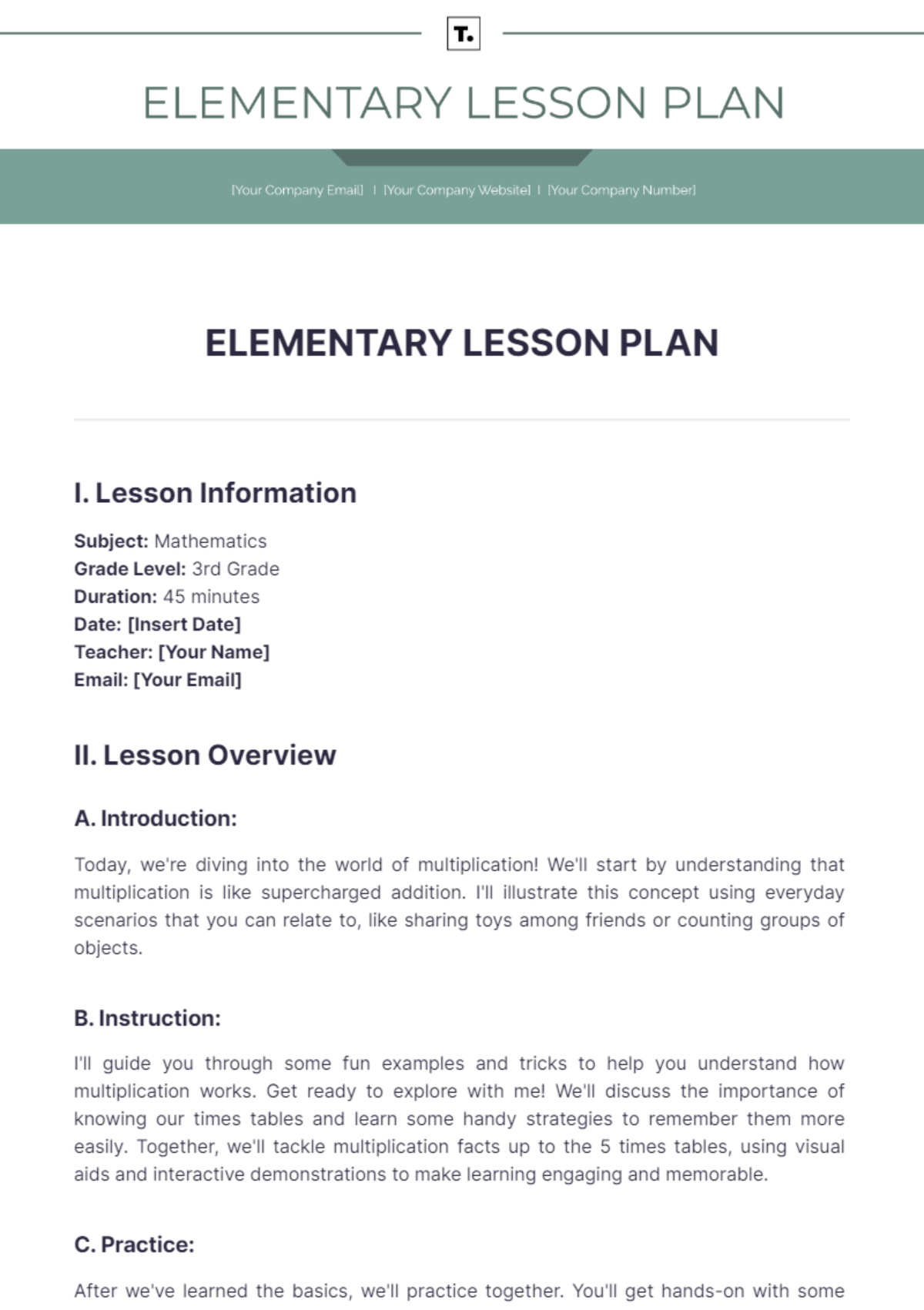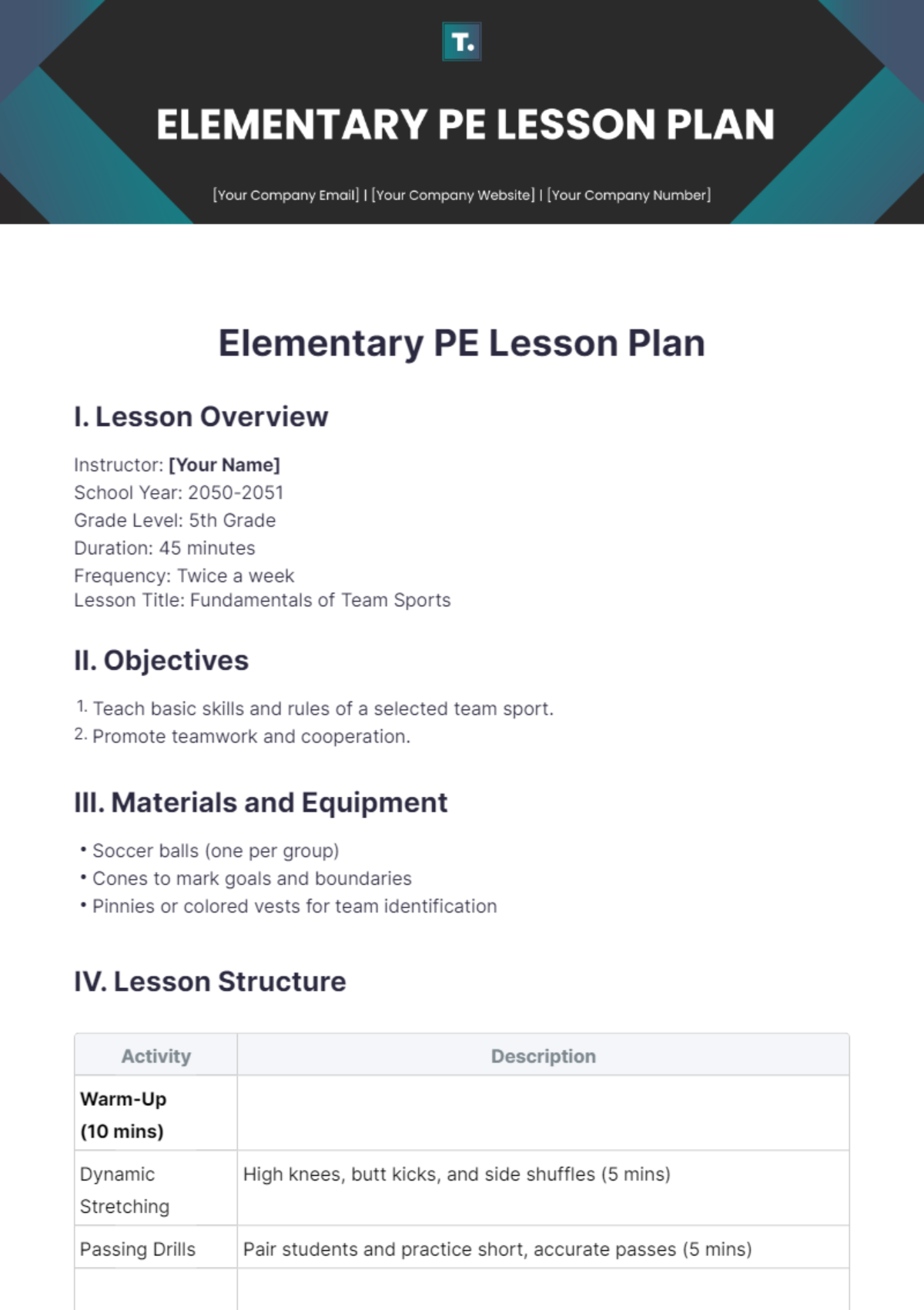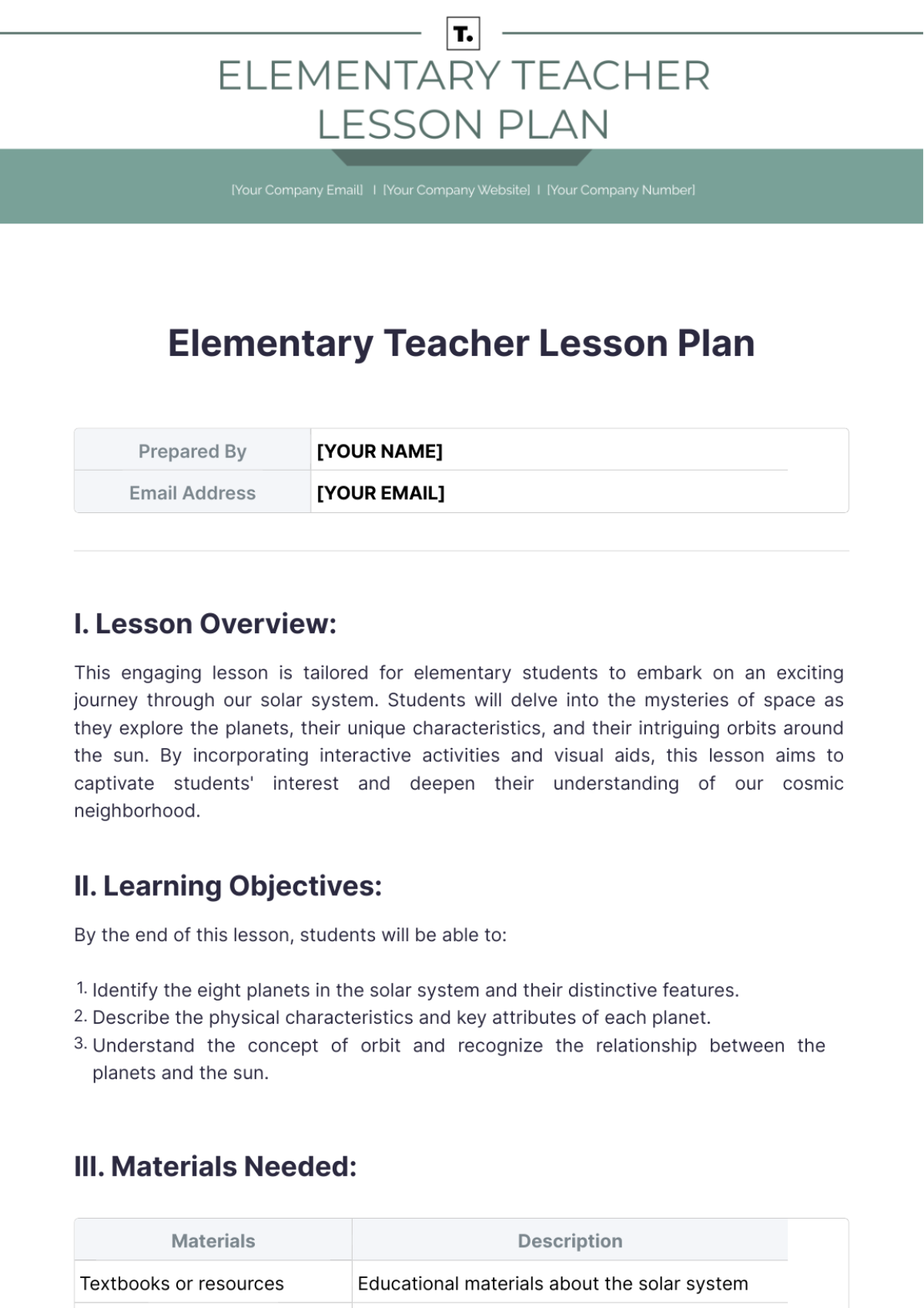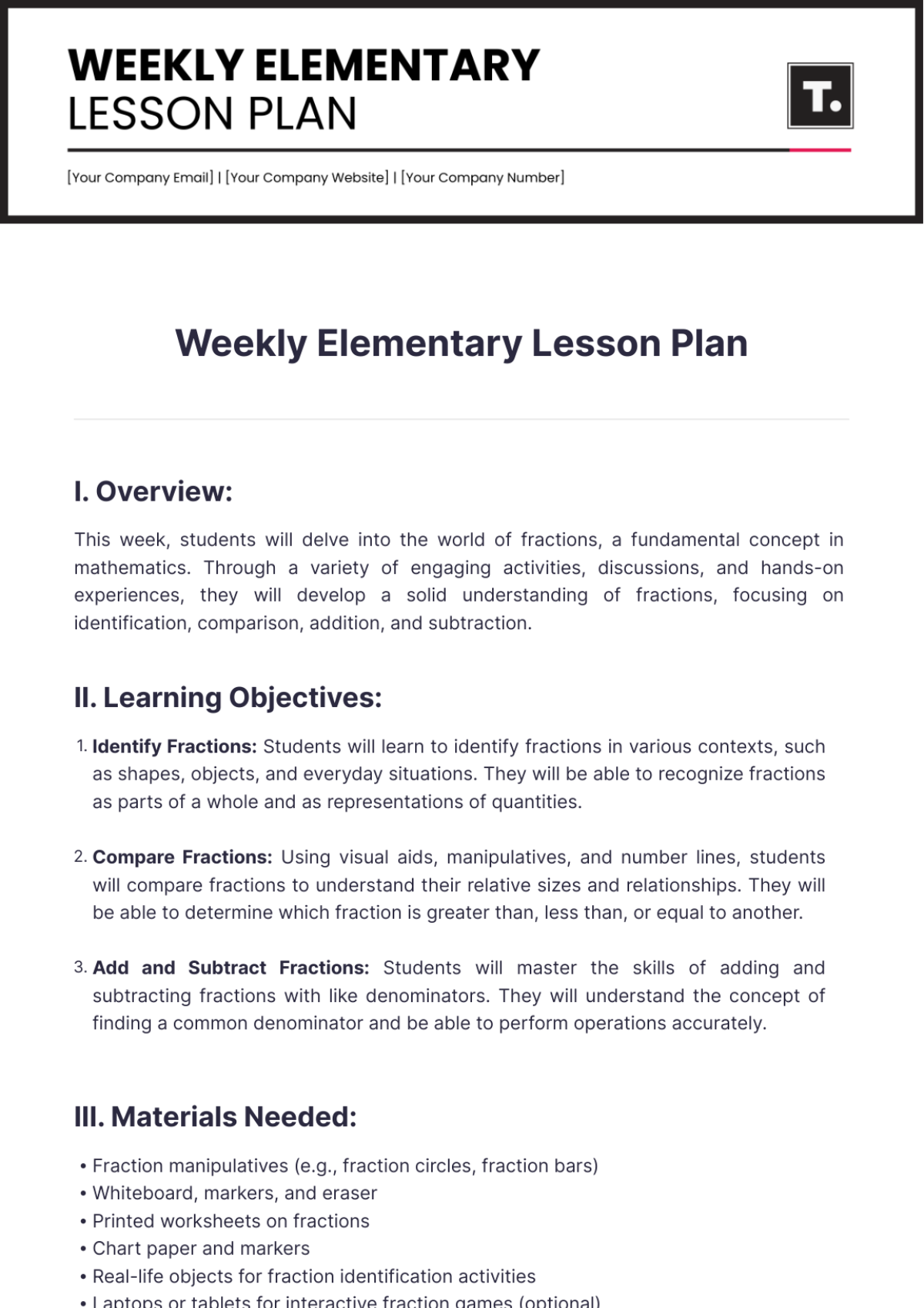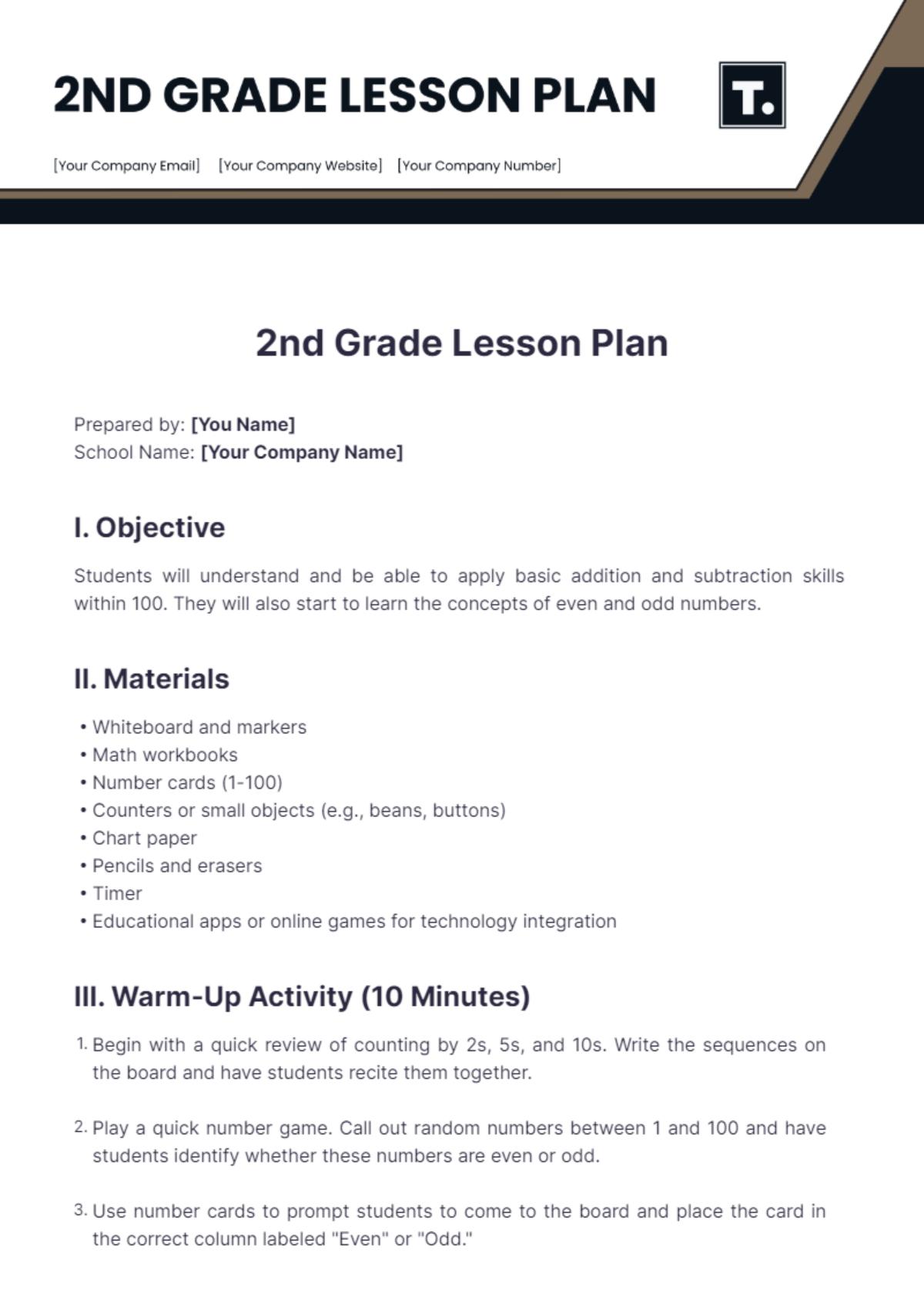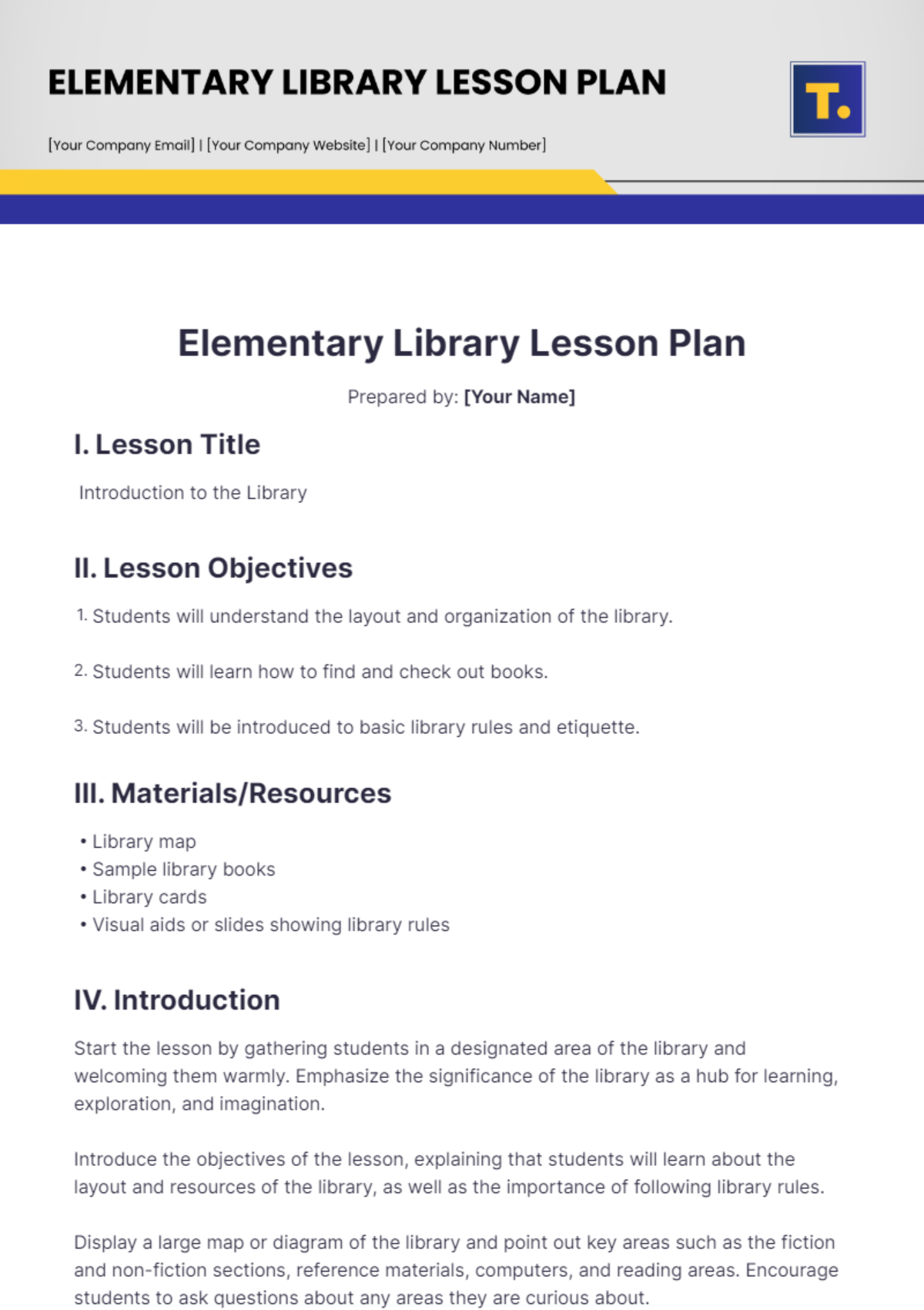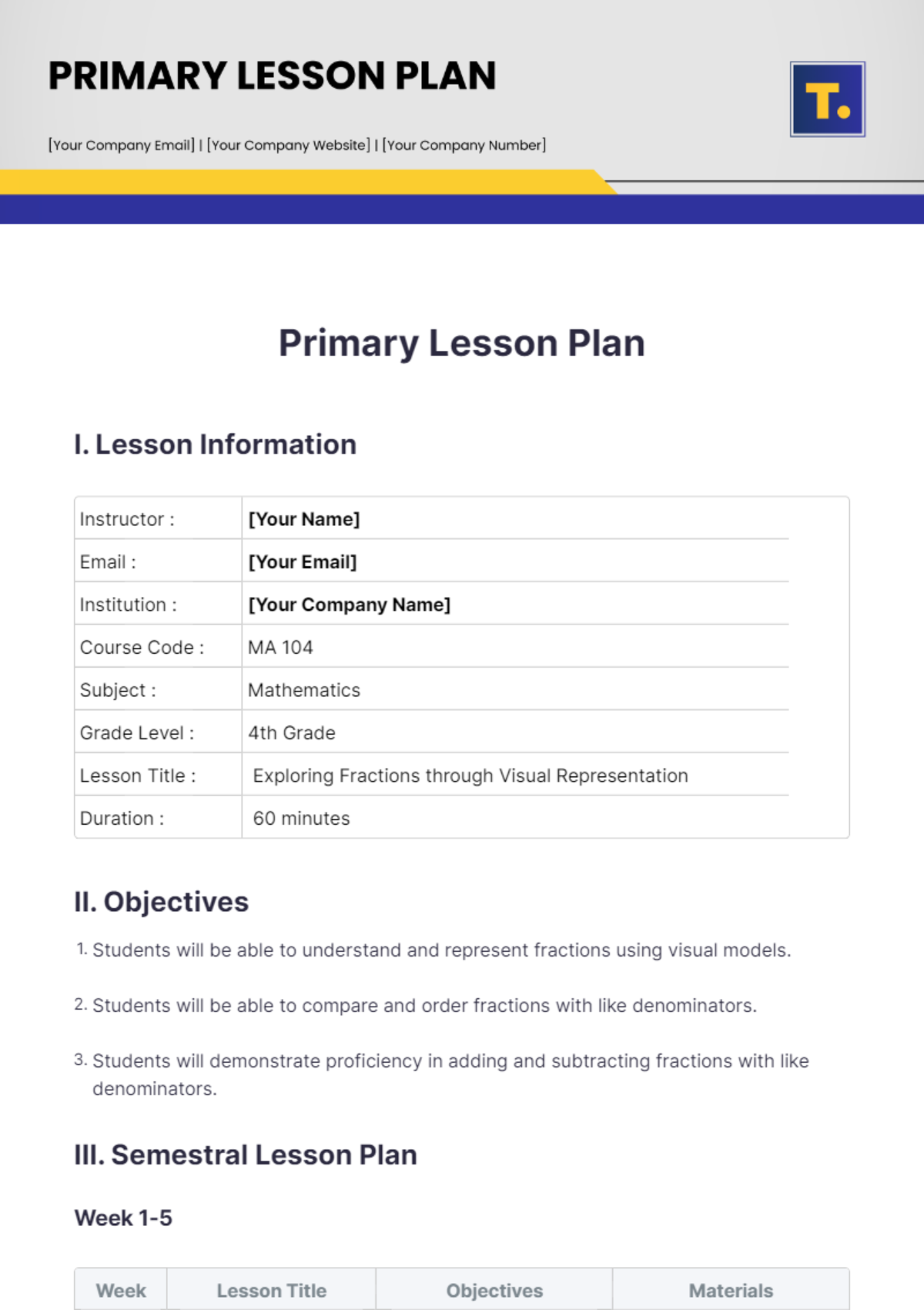Grade 3 Lesson Plan
Prepared by | [YOUR NAME] |
|---|---|
[YOUR EMAIL] | |
Institution | [YOUR COMPANY NAME] |
I. Lesson Overview
Title | Introduction to Sports |
|---|---|
Subject | Physical Education |
Grade | 3 |
Duration | 45 minutes |
Date | May 10, 2050 |
Objective | Students will be able to identify various sports and understand the importance of physical activity for health and well-being. |
II. Materials
Visual aids (e.g., posters, images) depicting various sports, ensuring diverse representation of both popular and lesser-known sports to broaden students' exposure.
Sports equipment (e.g., balls, cones, jump ropes) for hands-on learning and demonstration of skills.
Whiteboard and markers for interactive discussions, allowing for visual reinforcement of concepts and student engagement.
Worksheets with questions related to sports and their rules, carefully crafted to scaffold learning and promote critical thinking.
III. Introduction
Begin the lesson by discussing the importance of physical activity and sports for overall health and well-being, providing real-life examples and statistics to underscore the significance.
Engage students in a brief discussion about different sports they enjoy playing or watching, encouraging them to share personal anecdotes and preferences to foster a sense of connection and enthusiasm.
IV. Presentation
Show pictures or videos of various sports and discuss the characteristics of each, encouraging students to actively participate by identifying elements such as players, equipment, and playing field.
Introduce key vocabulary terms such as sport, athlete, team, rules, and equipment, employing strategies like concept mapping and mnemonic devices to aid retention.
Discuss the basic rules and objectives of popular sports such as soccer, basketball, and baseball, using engaging anecdotes and simplified explanations tailored to the students' level of understanding.
V. Activity
Divide the class into small groups, ensuring diverse composition to promote collaboration and peer learning.
Provide each group with sports equipment corresponding to a specific sport, carefully selecting age-appropriate gear and ensuring safety precautions are in place.
Instruct students to demonstrate basic skills related to their assigned sport, offering guidance and encouragement as they practice dribbling a soccer ball or shooting a basketball.
Rotate groups to allow students to try different sports, fostering inclusivity and exposure to a variety of physical activities.
VI. Collaboration and Discussion
After the activity, facilitate a discussion about the skills and techniques used in each sport, encouraging students to reflect on their experiences and share insights with their peers.
Guide students in comparing and contrasting different sports based on their rules, objectives, and equipment, prompting critical thinking and analytical skills development.
Discuss the importance of teamwork, sportsmanship, and fair play in sports, emphasizing values and ethics integral to both athletic and everyday contexts.
VII. Application
Distribute worksheets with questions about various sports and their rules, providing scaffolding and support as needed to ensure all students can actively participate.
In their groups, students work together to answer the questions, using their knowledge from the lesson and additional research if needed, promoting independent inquiry and information literacy skills.
Each group presents their answers to the class, explaining the rules and objectives of a specific sport, and fostering public speaking and presentation skills while reinforcing learning through peer teaching.
VIII. Assessment
Review students' participation during group activities, noting their engagement and teamwork, and providing constructive feedback to support growth and development.
Assess students' understanding of key concepts through informal questioning during the lesson, gauging comprehension and identifying areas for further reinforcement.
Evaluate students' completed worksheets for accuracy and comprehension, recognizing effort and improvement while addressing any misconceptions or gaps in understanding.
IX. Reflection
Lead a class reflection on the lesson, asking students to share what they learned and any questions they still have about sports, fostering metacognitive awareness and reflective thinking.
Encourage students to reflect on the importance of physical activity and sports in their own lives, prompting personal connections and goal setting for healthy lifestyle habits.
Prompt students to consider trying new sports and activities to stay active and healthy, empowering them to explore and embrace lifelong fitness pursuits.
X. Extension Activities
Invite a local athlete or coach to speak to the class about their experience with sports and the importance of physical fitness, providing inspiration and real-world role models.
Organize a mini sports tournament where students can compete in various sports and apply the skills they have learned, promoting friendly competition and teamwork in a fun and supportive environment.
Note to Teacher: Adapt the lesson plan as needed to accommodate the needs and interests of your students. Encourage students to research a lesser-known sport and create a presentation to share with the class, highlighting its rules, history, and cultural significance, fostering curiosity and global awareness.
